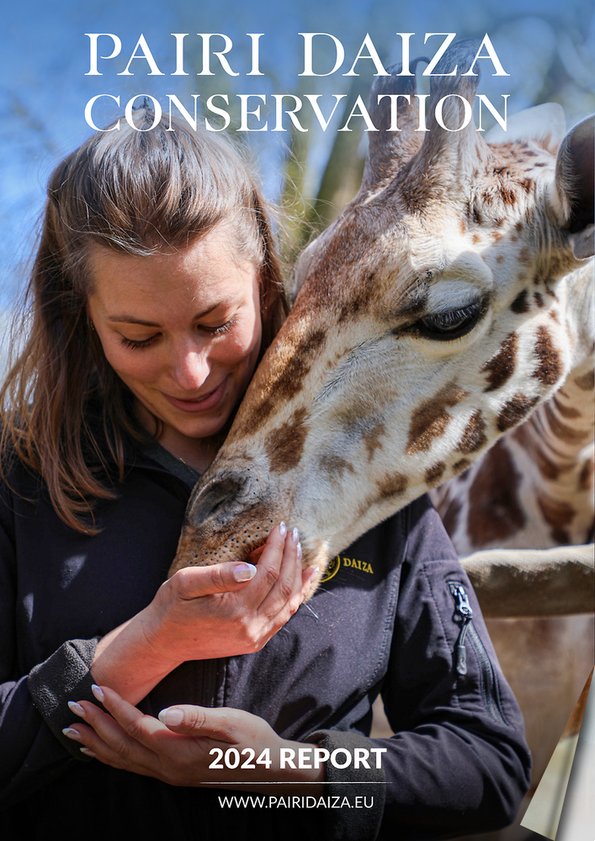Wild Animals in Belgium: 112 Animals Already Treated at Pairi Daiza’s Géraldine’s Heaven in 2025
Wildlife hospital and rehabilitation center Géraldine’s Heaven is an initiative of the Pairi Daiza Foundation. In the first seven months of 2025 alone, more severely injured animals have already been taken in and treated than in all of 2024. Géraldine’s Heaven — established in October 2023 — has quickly become an essential hub for medical care, offering surgical, diagnostic, and rehabilitation services for native wild animals in Belgium.
.jpeg)
Wild animals in Belgium face countless dangers on a daily basis: traffic, garden machinery, predators, poisoning and unintentional disturbance from human activity. Fortunately, there is an extensive network of specialized rescue centers in our country to save, treat, and — if possible — release these animals back into the wild.
Detailed monitoring and thorough comparisons of old collection and observation data with more recent ones show that many species are in decline or even have disappeared.
Biodiversity.be shares remarkable numbers: In Flanders, at least 7% of formerly recorded species are extinct, 20% are endangered and 27% are vulnerable to near threatened; only 43% are considered safe or at low risk.
A similar situation exists in Wallonia, as, depending on the taxonomic groups, between 40% and 83% of the species show an obvious population decline.
A Strong National Network of Wildlife Care
In Belgium, a close-knit network of conservation organizations works together to rescue and care for wild animals in need. In Flanders, this is done through the VOCs (Flemish Wildlife Rescue Centers), while in Wallonia, the CREAVES (Rehabilitation Centers for Wild Species) are on the front lines. Along with the CRFS (Rehabilitation Centers for Wild Fauna) and the CDS (Coordination Center for the Protection of Wild Fauna) in Brussels, they form an effective network that ensures the care, treatment, and rehabilitation of native wildlife in distress.
The most commonly rescued species depend on the region, season, and human activity (e.g., traffic, mowing, pets), but clear trends are emerging.
A Center with Cutting-Edge Expertise: Essential Second-Line Care
Unlike other rescue and rehabilitation centers, Géraldine’s Heaven Géraldine’s Heaven does not take in animals directly from private individuals, but provides its advanced infrastructure and expertise to certified rescue centers.
The team includes two veterinarians, two caregivers, and several volunteers. The center is equipped with state-of-the-art medical equipment, including an ultrasound machine, X-ray, endoscopy tools, infusion systems, and a specialized veterinary ward with controlled oxygen and temperature regulation. This is supported by a network of specialists, including veterinary dentists, ophthalmologists, and imaging experts, who can intervene in complex cases.
📊 Operational Figures from January to July 2025
🐾 Total animals admitted: 112
🧬 Number of different species: 41
📅 Admission period: January 27 to July 31, 2025
🐣 Age distribution:
- 21 nestlings or featherless young
- 30 juveniles
- 61 adults

Hedgehogs: Unfortunate Front-Runners
In 2025, 33 European hedgehogs have already been admitted and cared for. This brings the total number of individual hedgehogs that have passed through Géraldine’s Heaven since its founding to 627 individuals — a striking figure that reflects the many dangers these small mammals face in their natural habitat.
The main threats are directly linked to human activities: many animals fall victim to roadkill incidents, by increasing urbanization and the fragmentation of their habitats. Others suffer severe injuries from garden tools like lawnmowers and brush cutters, which are often used without sufficient awareness of local wildlife.
These concerning developments are part of a broader, alarming pattern. Since October 2024, the European hedgehog has been listed as “Near Threatened” on the Red List of the International Union for Conservation of Nature (IUCN) — a significant downgrade from its previous status of “Least Concern.”
This red flag underscores the urgent need for stronger protection measures for hedgehogs. The sobering statistics also highlight the vital role played by rescue and rehabilitation centers like Géraldine’s Heaven, which tirelessly work to ensure the welfare of these endangered native animals.
A Remarkable Diversity of Species Treated:
- 33 hedgehogs
- 7 roe deer
- 6 stone martens
- Various birds of prey, including owls, 4 kestrels, and 2 buzzards
- Various songbirds
Currently Under Care
This week, under the care of Géraldine’s Heaven, are:
- 8 European hedgehogs
- 1 great tit nestling, named Bigoudi, who fell from the nest
- Kestrel Chanel, with an injury to her left wing
- Stone marten Houdini, whose wrist had to be amputated
- Stork Abigail
- A squirrel
Together for a Living and Biodiverse Future
As native wild animals face increasing pressure from human activity, the network of centers supported by Géraldine’s Heaven proves that care, knowledge, and collaboration can truly save lives. The results from the first half of 2025 — with 112 animals already rescued and long-term medical care provided for the most vulnerable — emphasize the need for ongoing vigilance and support.
Protecting biodiversity isn’t just about saving species — it’s about strengthening ecosystems, restoring balance, and acknowledging our connection to nature. The impact of every rescued animal goes beyond the individual: it’s a step toward healing.
🔍 Discover more of the Pairi Daiza Foundation’s projects, both in Belgium and abroad, in the Annual Report.

Johan Vreys

.jpeg)
.jpeg)
.jpeg)







